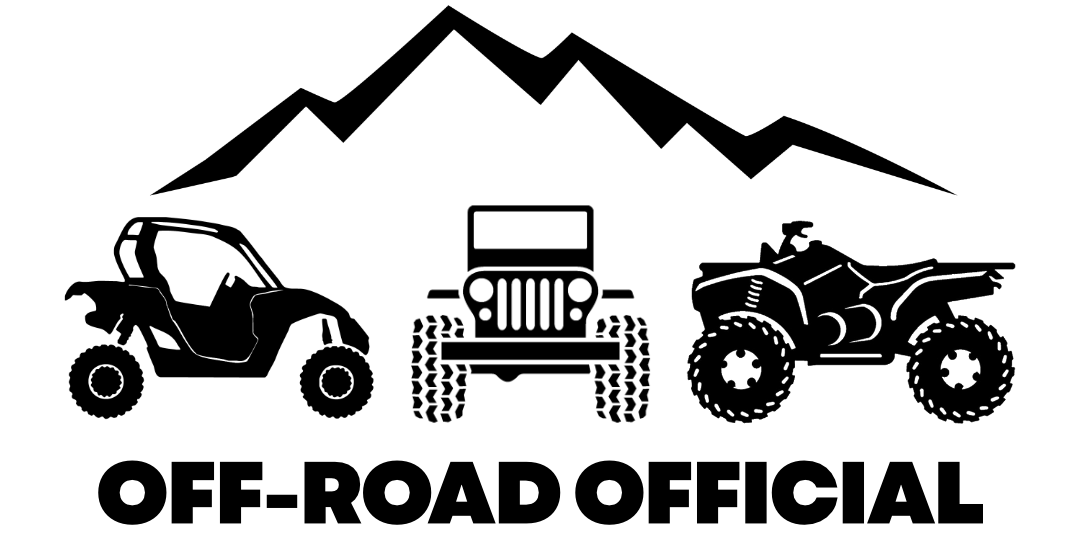If you read a review of Kawasaki Mules, you’ll understand just how hard-working and durable these models are.
The Mule 3010 is no different, with its pickup truck design and ability to haul heavy loads across rough terrains making it a favorite among farmers, ranchers, and the like.
But unlike the most popular present-day Mules, such as the Kawasaki Mule Pro FXT Ranch Edition or the Kawasaki Mule Pro MX, the Mule 3010 is an older model and was phased out when the Mule 4010 came along in 2009.
This means many of them already have a long history of hard work to their names, and also puts them towards the bottom of the list in terms of the fastest Kawasaki Mule models.
And these older models tend to be affected by a few common problems that you may encounter as an owner.
Kawasaki Mule 3010 Problems
The following are six of the most common Kawasaki Mule 3010 problems you may run into:
- Carburetor problems
- Overheating
- Fuel pump issues
- Transmission sticking
- Engine not starting
- Faulty brakes
Let’s explore what may be causing these problems and how they can be resolved.
Kawasaki Mule 3010 Carburetor Problems
Similar to the newer Kawasaki Mule SX, the Mule 3010 is makes use of a carburetor rather than EFI.
Carburetors have some advantages over EFI, but do lead to a number of issues as well including the following:
- The engine sputtering and/or stalling at idle
- Engine surges
- The engine refusing to start without the choke
These Mule 3010 carburetor problems are unfortunately fairly common as carburetors have a tendency to gum up and clog over time for a variety of reasons.
And the two pilot jets located within the carburetor are particularly susceptible to this.
If these pilot jets in the carburetor are partially plugged, your Mule may start and idle but have issues making the transition to higher speed when you throttle due to the carburetor not fueling correctly.
Fix
A thorough cleaning of the carburetor can help to resolve these issues, but be sure to pay attention to the pilot jets located inside as well.
In order to extensively clean the carburetor, you’ll need to first remove it from your Mule and disassemble it.
You can find a diagram of the carburetor and its parts on Kawasaki’s website to assist with this, and there’s a step by step guide to cleaning the carburetor in the Mule 3010 repair manual as well.
Once you’ve disassembled the carburetor, locate the two pilot jets beneath the fuel bowl. The smaller of the two is the idle jet, but you’ll want to remove both and inspect them.
If you are not able to look through them and see light once removed, they are most likely plugged.
Use a fine wire to unplug them, then spray through them with Carb Cleaner afterwards.
Unclogging these jets and ensuring the rest of your carburetor is free of dirt and gunk has fixed many Mule 3010 engine and idling performance issues.
Kawasaki Mule 3010 Overheating
If you’re experiencing issues with your Mule 3010 overheating, three of the most common causes are as follows.
- Faulty water pump belt
- Airlock in coolant system
- Defective head gaskets
Causes & Fixes
Faulty Water Pump Belt
If you notice that your water pump fan does not come on but the overheating warning light turns on, and you notice water overflowing from your coolant reservoir to the left of the steering wheel, you likely have an issue with your water pump belt.
To inspect this belt, you’ll need to remove the cage covering the water pump belt fan, as well as the shaft that runs the four wheel drive.
When able to inspect, if your water pump belt appears to have thinned down or is no longer tight-fitting, you should replace it with a new one.
The added tension from a thicker, tighter belt should enable the water to circulate to the radiator correctly and turn the fan on.
You should notice that water does not overflow from your coolant reservoir any longer when this issue is resolved.
Airlock In Coolant System
An air bubble blockage somewhere in your coolant system is one the main culprits of an overheating Mule 3010. How does an air bubble form?
If our fan is not triggering properly, the engine will overheat and allow air into your coolant system.
Eventually this air will find its way to the water pump, which is not able to pump air.
Air in the water pump will negatively affect its ability to pump coolant to your engine, which will result in the radiator staying cool and the engine overheating.
Once air is in the coolant system, your engine will overheat until that air is bled back out.
You can bleed the air from your Mule 3010 by following these steps:
- Park on a hill or use a lift to raise the front end of your Mule
- Ensure the engine is cold
- Remove the 10mm bleeder bolt from the metal pipe coming from the thermostat
- Remove the radiator cap
- Fill the radiator until coolant comes out of the bleeder
- Reinstall the bleeder bolt
- Continue filling radiator until it overflows
- Start the engine of your Mule and let idle – you’ll most likely see some bubbles
- Once bubbles stop, shut off engine and replenish coolant if necessary
- Repeat this process until you no longer see bubbles
- Reinstall radiator cap
Your coolant system should be bled of any air bubbles at this point, but if you see excessive bubbling that won’t stop from the radiator fill area, you’re likely dealing with a blown head gasket.
Defective Head Gaskets
A blown head gasket can lead to overheating issues in your Mule 3010.
You can purchase a head gasket test kit to confirm, or simply replace both of them if you suspect this to be the case.
Kawasaki Mule 3010 Fuel Pump Problems
Similar to one of the common issues found in the Mule 4010, the Mule 3010 is known to suffer from fuel pump issues.
If you’re experiencing a loss of speed and acceleration, rough idling, or the engine failing to start – these are all indicators of a potentially faulty fuel pump.
Ironically, fuel pump issues are most likely due more in part to the fuel filters than to the actual fuel pumps themselves.
If your fuel is not clean and has debris in it, it will start to clog the fuel filter.
When your fuel filter becomes clogged it will lead to a lack of fuel in the pump, which limits the lubrication and coolant to the pump’s drive motor.
This eventually leads to a failure of the drive motor and fuel pump.
Fix
For that reason, you should be checking your fuel filter regularly to see if it may be turning a dirty brown color, which indicates clogging.
Running ethanol-free fuel helps to cut down on this issue too.
Kawasaki Mule 3010 Transmission Problems
Another common issue experienced by Mule 3010 owners is the propensity for the gear shift to get stuck and not enable the driver to shift gears when coming to a stop.
This issue arises due to the use of a dog ring gearbox/transmission, and is not limited to the Kawasaki Mule as it happens in other UTVs, ATVs, motorcycles, and some older car models which use this same type of transmission.
Fixes
The solution to this happening while the engine is running is to apply slight pressure to the gas pedal, bringing the RPMs to just around 100, while attempting the gear shift.
Giving the Mule some gas should engage the clutch and turn the drive pulley, slightly shifting the transmission into place properly where the collars and gears are correctly aligned again.
You may want to have your other foot near the brake in these scenarios as a safety precaution.
If you have powered off your Mule while not in neutral and experience a stuck gear shift, try holding down the brake to start your Mule while in gear and then make the gear shift.
Mule 3010 Engine Won’t Start
There are many potential issues that could cause the engine not to start.
Some of the more common ones are defective spark plugs, a dead battery or loose battery cables, the transmission not being in neutral, or a bad fuel pump.
Causes & Fixes
If you mostly use your Mule for shorter trips, such as to the mailbox or up the street and back, you may have an issue with your spark plugs.
Drives of short durations can wear the spark plugs down quickly and cause fouling, so replacing them is a good starting point.]
Short trips like that can also do a number on your battery, which is the next best component to inspect if the spark plugs aren’t your issue.
Check all of your battery cables to ensure they’re secured tightly, and test your battery’s voltage to see if it may need charging.
If the engine won’t start but just makes a clicking noise, check to ensure that your Mule is in neutral as there is a safety switch that will prevent the engine from starting if not.
However, you can bypass this safety switch on some models by pressing down the brake pedal and then starting it.
If you recall hearing a whining sound coming from the fuel tank in the rides before your Mule stopped working, this could mean the fuel pump has gone out and needs to be replaced.
Mule 3010 Brakes Squealing
Another common issue reported among Mule 3010 owners is a high-pitch squealing or screeching noise when applying the brakes.
This can happen even when not applying the brakes, which generally signals an issue with your brake pads.
Fix
Many times this can be fixed by removing the brake pads, applying some brake grease to them, and reinstalling.
Simply cleaning the brake pads using a hose or some soapy water may work as well, especially for those who drive often in dusty conditions.
Conclusion
Despite these common problems, the Kawasaki Mule 3010 is still a highly dependable and hardworking vehicle that excels at getting the job done.
Before you go, check out this guide to the best Kawasaki Mule windshields if you’re in need of accessories for your Mule.
This list of the most popular Kawasaki Mule accessories will give you some ideas on increasing the driveability and appearance of these older models as well.


